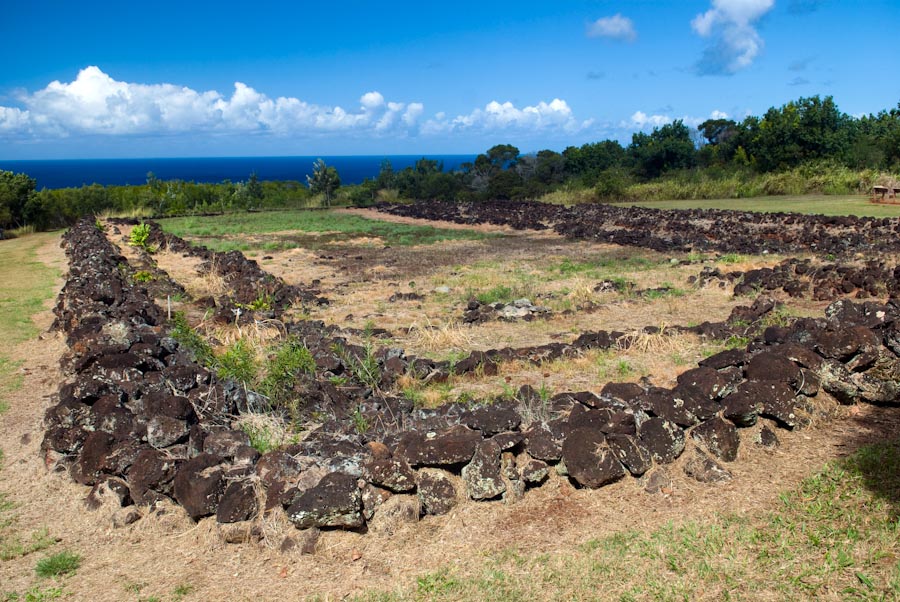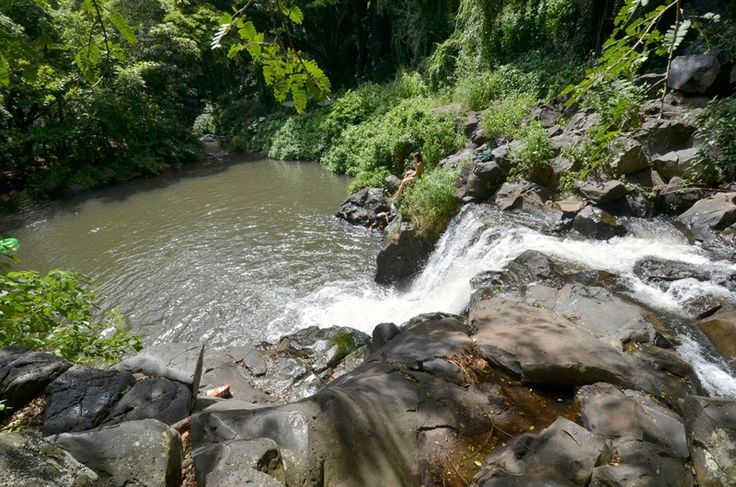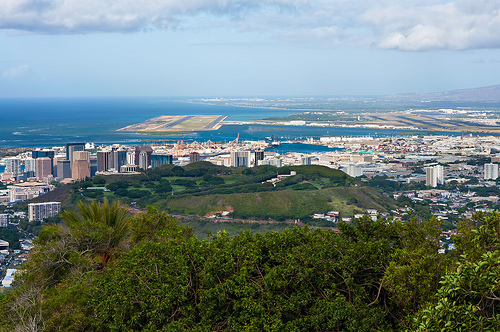 Pu'u o Mahuka Heiau State Monument is a state park and historic site on the North Shore of Oahu, Hawaii. It is the site of the largest heiau, or religious temple, on the island. The name means "hill of escape" in the Hawaiian language.
Pu'u o Mahuka Heiau State Monument is a state park and historic site on the North Shore of Oahu, Hawaii. It is the site of the largest heiau, or religious temple, on the island. The name means "hill of escape" in the Hawaiian language.
Sitting on a hilltop with spectacular views of Waimea Bay and Waimea Valley, the heiau played an important role in the social, political, and religious system of the valley which was a major occupation center of Oahu during the pre-contact period.
The Pu'u o Mahuka Heiau is believed to have been built in the 1600s as a series of 3 walled enclosures. The stacked rock walls ranged from 3 to 6 feet in height and the interior surface was paved with stone. Within the walls were wood and thatch structures. Such a large heiau would have been built by the makaçainana (commoners) under the direction of a high ruling chief (ali'i nui) and his priests (kahuna).
The heiau was used by ruling chiefs of the time and his priests for various religious ceremonies. It was expanded and modified as seen fit by the ruling chief. It was used as a temple until 1819 when the traditional religion was abolished. After the heiau was abandoned, the area have been used for other purposes including agriculture. Pineapple was cultivated around the heiau until the 1960s.
Pu'u o Mahuka Heiau was declared a National Historic Landmark in 1962 in recognition of its importance to Hawaiian culture and history. The 4-acre property encompassing the heiau was placed under the jurisdiction of State Parks to preserve this significant site for future generations.
The site can be reached from Pupukea Homestead Road (Highway 835), which starts at Kamehameha Highway (Highway 83) across from Pupukea fire station.
Visitors are requested to respect the site and to not enter the structure to avoid further damaging the walls.





